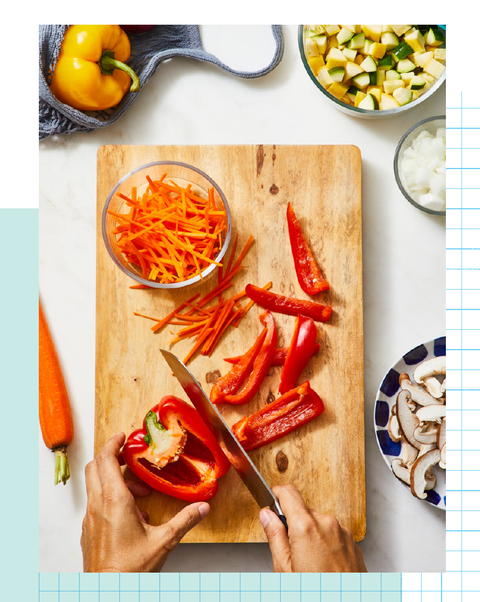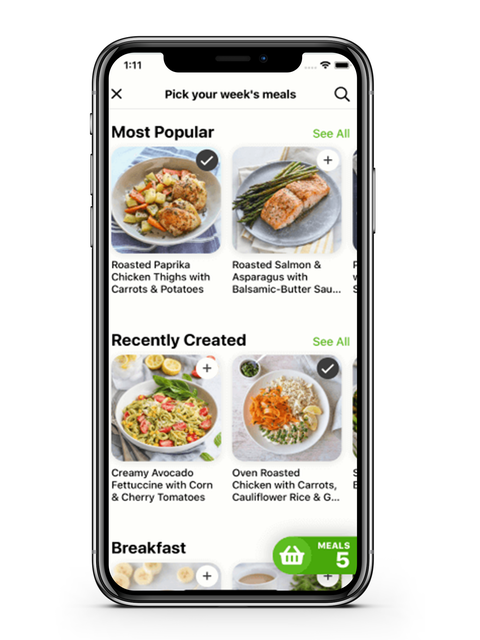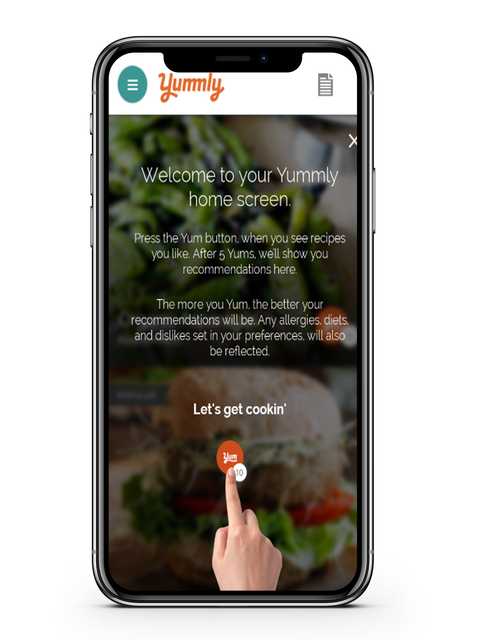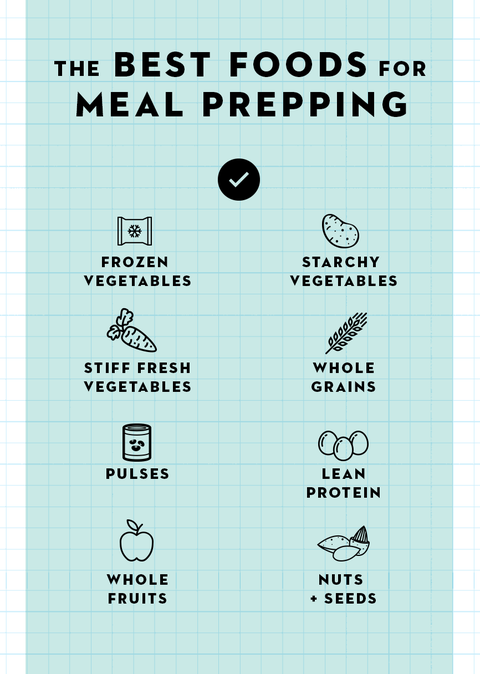By the time you get home from work, make dinner, eat it, and clean up, it can feel like it’s almost time to go to bed — not so fun. Enter meal prepping, a planning method that simplifies cooking and bases it around your schedule, so you’re not scrambling through a 16-step recipe when you’d rather have your feet up, dinner done, and Netflix on.
First of all, what is meal prepping?
Meal prepping can describe several different food preparation methods, but basically, it’s almost like organizing leftovers for easier breakfast, lunches, or dinners. There’s no singular way to do it, but two common types include:
What are the benefits of meal prepping?
Meal prepping can save you time and money since you’re buying and preparing home-cooked food ahead of time. Many people meal prep by shopping and cooking on the weekends, which may work better with your schedule than cramming it in during a weekday. Meal prepping can also make it easier to eat healthier (and lose weight, if that’s your goal) since the menu gets set in advance. You’re less likely to choose a not-so-great option when you’ve already have a healthy dinner at home, ready to go.
Is there any downside to meal prepping?
Since meal prepping can involve eating the same dish or types of food a few days in a row, it’s not for people who prize variety and freshness above all else. Getting kids on board with eating “leftovers” can also pose a challenge, especially if you’re making accommodations for different dietary restrictions or palettes. To avoid monotony, use different spices, dressings, or condiments to flavor your meals — or plan on freezing your prepped food for dinner another week.
Okay! I am ready — how do I start meal prepping?
Before you do anything, you’re going to want to stock up on reusable, airtight food storage containers that will make your prepared ingredients or meals stay fresh longer and taste better by locking bacteria and odors out.
Once you have your meal-prepping gear, you may want to download a meal prep app that will help you keep your plan organized and make shopping and cooking a snap by curating recipes and grocery lists for you.
All set? The next step is picking your recipes. Before you do, consider these three things:
- Choose a meal you’d like to prepare for — breakfast, lunch, or dinner. Keep it simple by starting with one you usually eat out or skip altogether.
- Pick a day to do your meal prepping. Sunday and Wednesday are two common choices.
- Determine how much you want to prep. Experiment with prepping for two or three days before attempting five. You may not like eating the same thing the whole week.
If you’re planning on creating your own recipes, Jaclyn London, MS, RD, CDN, Director of the Nutrition Lab at the Good Housekeeping Institute, says to make veggies or fruit at least 50% of whatever you’re prepping. They don’t necessarily have to come from the actual produce section, though: Frozen or canned varieties will last almost forever and work in nearly every meal.
The best foods for meal prepping:
- Frozen vegetables: peas, broccoli, cauliflower, Brussels sprouts, green beans, veggie pastas, cauliflower pizza crust, riced veggies, veggie-based tater tots
- Starchy vegetables: parsnip, cassava, potato, yuca, taro, parsnip, sweet potato, canned pumpkin
- Stiff fresh vegetables: celery, carrots, bell peppers, cabbage, radish
- Sturdy greens: romaine, green leaf (dress just before serving)
- Whole grains: oats, quinoa, barley, buckwheat, sorghum
- Pulses: chickpeas, lentils, beans, peas
- Lean protein: frozen or canned seafood, eggs, unsweetened Greek yogurt, skyr, reduced-sodium cottage cheese, shredded cheese, tofu, lean cuts of chicken, turkey, beef, pork
- Whole fruits: apples, bananas, oranges, clementines, plums, peaches, pears
- Nuts and seeds: almonds, walnuts, peanuts, pumpkin seeds, chia, flax
Save this trusty shopping list for your next trip to the grocery store:
Need help with recipe inspiration? We’ve got you covered:
Best meal prep recipes for breakfast:
Breakfast is the most important meal of the day, so it’s a good one to pick when you’re choosing which meals to prep. You want to make sure your meal is light, but also has good carbs, fiber, and protein.
Best meal prep recipes for lunch:
Salads and soups are anything but boring when you take the time to customize them to your liking. Regardless of what you pick, focus on lean protein, healthy carbs, and veggies.
Best meal prep recipes for dinner:
Add lots of color to your plate by loading up on all sorts of vegetables, including broccoli, peppers, and tomatoes, but go lighter on the carbs and grains.
Best meal prep recipes for snacks:
Put a healthy spin on your childhood favorites when the afternoon slump hits. Trade peanut butter for almond putter and cheesy popcorn for sweet matcha.
How long will meal prepped food last?
Prepared foods can remain refrigerated for 2–5 days or frozen for 3–4 months, depending on the ingredients. To play it safe and avoid foodborne illness, keep food out of the “danger zone” — temperatures between 40° F and 140° F. Sealing food in airtight packaging or storage containers will not only keep bacteria out, but also protect the flavor and lock moisture in.




























